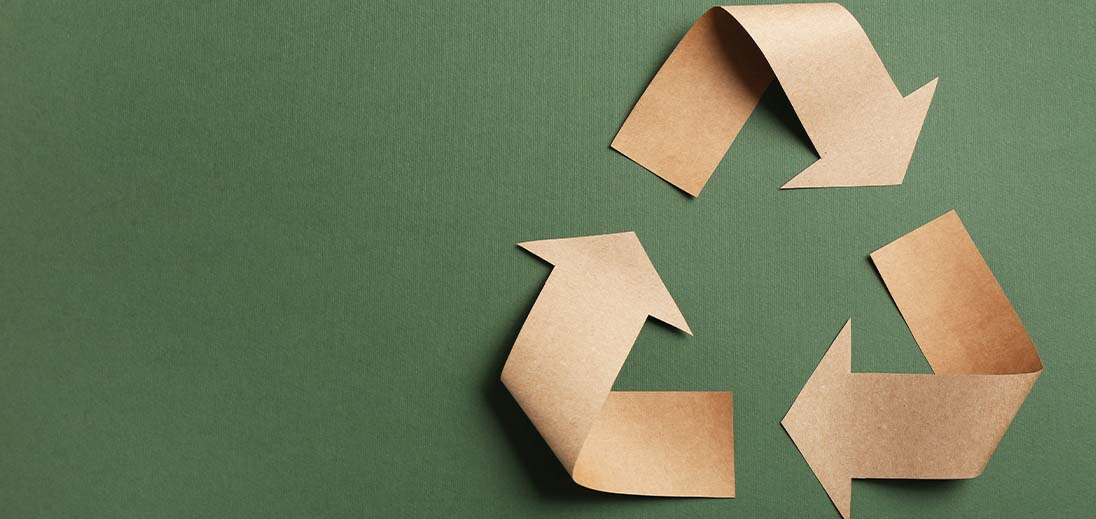Recycled paper vs Virgin paper: Which is better for your business?
Today, there’s an ever-growing focus on sustainability, especially within businesses. As a result of this, many companies are striving to broaden their environmental awareness, adopting habits that can help them achieve a more sustainable future.
Today, there’s an ever-growing focus on sustainability, especially within businesses. As a result of this, many companies are striving to broaden their environmental awareness, adopting habits that can help them achieve a more sustainable future.
One way of being more eco-responsible in the workplace is by choosing paper that boasts positive environmental credentials. Using recycled paper seems like the obvious choice - but what about virgin paper?
In this article, we explain the main differences between recycled and virgin paper to help you decide which paper product will be the best fit for you and your customers.
What is recycled paper?
Put simply, recycled paper is paper that has been reprocessed back into paper. Recycled paper is made up of used paper, bindery trimmings and wood chips, as well as leftover material from the paper-making process.
The process of manufacturing recycled paper involves a number of steps, starting with the raw material of waste paper, to purification, de-inking, whitening, drying and coating, before ending with the final product - recycled paper that’s comparable with non-recycled paper in terms of printability and aesthetics.
Why use recycled paper
There are a number of benefits associated with using recycled paper. For example, using recycled paper can do good things for a brand, demonstrating a commitment to the environment. It can also become part of a company’s Corporate Social Responsibility strategy.
But what sort of impact does using recycled paper actually have on the environment itself? Keep reading to find out more.
How does recycled paper help the environment?
Using recycled paper is one of the greenest options available. Since it can be recycled four to five times, using recycled paper reduces the amount of waste going to landfill, which in turn produces lower carbon emissions.
Sending waste paper to landfill releases methane gas - a colourless, odourless but highly flammable gas that’s made up of carbon and hydrogen. Methane gas is a powerful greenhouse gas. This means that it has a significant impact on climate change. In fact, this gas is responsible for over 25% of the global warming that we experience today.
What’s more, the production of recycled paper uses less energy and water compared to the manufacturing of non-recycled paper.
Also, since fewer trees need to be cut down to make paper, using recycled paper can help conserve natural resources.
Is recycled paper a good quality?
The answer is yes - recycled paper is good quality. It’s possible to purchase recycled paper that offers an ultra-smooth surface with a consistent finish. Due to the texture and appearance, you may not even be able to tell it apart from non-recycled paper
What’s more, advances in processes and technology means that recycled paper can be just as white as non-recycled paper. Recycled paper can also be found in a range of different shades, from natural to bright white.
Recycled paper possesses the same print performance as non-recycled papers. This means you can benefit from finest recycled paper with excellent printability for all of your print communication needs. At Antalis, we offer a wide range of high quality recycled paper from a selection of premium brands, including Cocoon Offset, Cyclus, Xerox, Image, and more.
What is virgin paper?
Unlike recycled paper that has already been used and processed through a recycling facility, virgin paper is a type of high quality non-recyclable paper that is made directly from wood pulp. In fact, approximately 90% of virgin paper is made from wood pulp, and most paper products contain some traces of virgin fibres.
To make virgin paper, trees are cut down, with the wood then being processed into pulp. This is then bleached and turned into paper. This process uses a significant amount of energy and resources, such as water, fossil fuels and chemicals.
Virgin paper is most commonly used for a number of household products, including toilet paper, napkins and paper-style coffee cups. The material is renowned for its high absorbency, as well as producing good printing results.
Can virgin paper have good environmental credentials?
Since virgin paper is non-recyclable, it could be said that it’s not particularly good for the environment. However, the truth is paper that has been made from virgin fibres is technically no less environmentally responsible than paper that’s been constructed using recycled fibres.
The Forest Stewardship Council (FSC) has said that virgin paper is environmentally sound. This is down to the fact that without the production of virgin fibres, we would run out of paper fairly quickly. In short, since recycled paper can only be recycled a handful of times, the production of virgin paper is needed in order to keep manufacturing and using paper-based products.
What’s more, it’s also possible to responsibly source virgin paper if it’s been derived from forests where wood pulp can be collected while keeping older tree generations alive and growing.





